Each year more than a million people travel from around the world to see the Book of Kells, but what do most of us in Ireland know about it? I have a vague memory of being brought to see it as a child, of two pages in a glass case, indecipherable reds and yellows, a crush of people. On my way to visit it this week, I realised I knew little other than its cultural significance as an object. I could have given a tourist directions to find it, but I’d have struggled to explain its history. According to Dearbhla Mac Fadden of Trinity College Dublin, I’m not alone.
“What we find with our domestic audiences – or our non-audience, I should say! – is that they’ve been as children, or on a school tour with a teacher, and they haven’t considered ever coming back since.” She and her colleagues are hoping that the new Book of Kells Experience, which opens this week, will not just showcase this treasure to international visitors but also spark a fresh curiosity in both younger and Irish audiences.
The Book of Kells is currently housed in Trinity’s 18th-century Old Library. The pages on display are changed regularly, though the schedule is kept secret for security reasons. Visitor tickets are for the book and for the beautiful Long Room library. Centuries of pollution and dust accumulation have exerted a heavy toll on the building, and an urgent need to improve fire protection and environmental controls meant that an Old Library conservation and renovation project was announced in 2020. Each book is being taken down, cleaned and electronically tagged before being relocated to a climate-controlled storage facility. Two hundred thousand volumes have been decanted in a year and a half, an average of about a bay a week. The upshot is that the Book of Kells will also need to move.
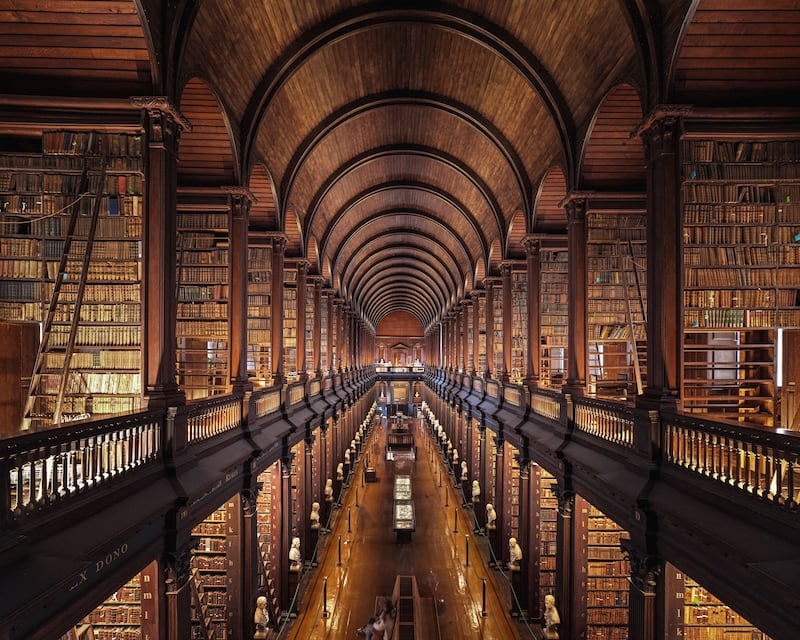
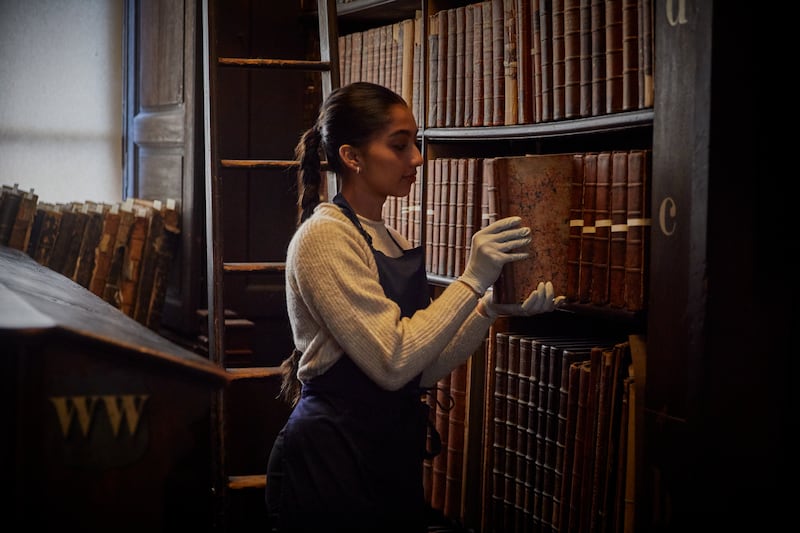
The Old Library was originally due to shut to the public this autumn, but its closure has been postponed until 2025. When this happens, the Book of Kells will move to the nearby Printing House, which is itself about to be adapted to house its precious guest. Until then, visitors will enter the Old Library through an orientation area (formerly the gift shop), and see the Book of Kells in its current home, before going back outside to a new building that houses the Book of Kells Experience.
READ MORE
On the Trinity campus, the word “building” might suggest classical porticos and ornate pillars with hand-carved motifs. Turning the corner, what greets me is a vast red metal box, its facade emblazoned with a bold, book-like K. Picture a shipping container on steroids. This new pavilion is such an unexpected sight among the university’s historic buildings, yet it is oddly appealing, like coming across a tree crammed full of holly berries on a dull winter’s day.
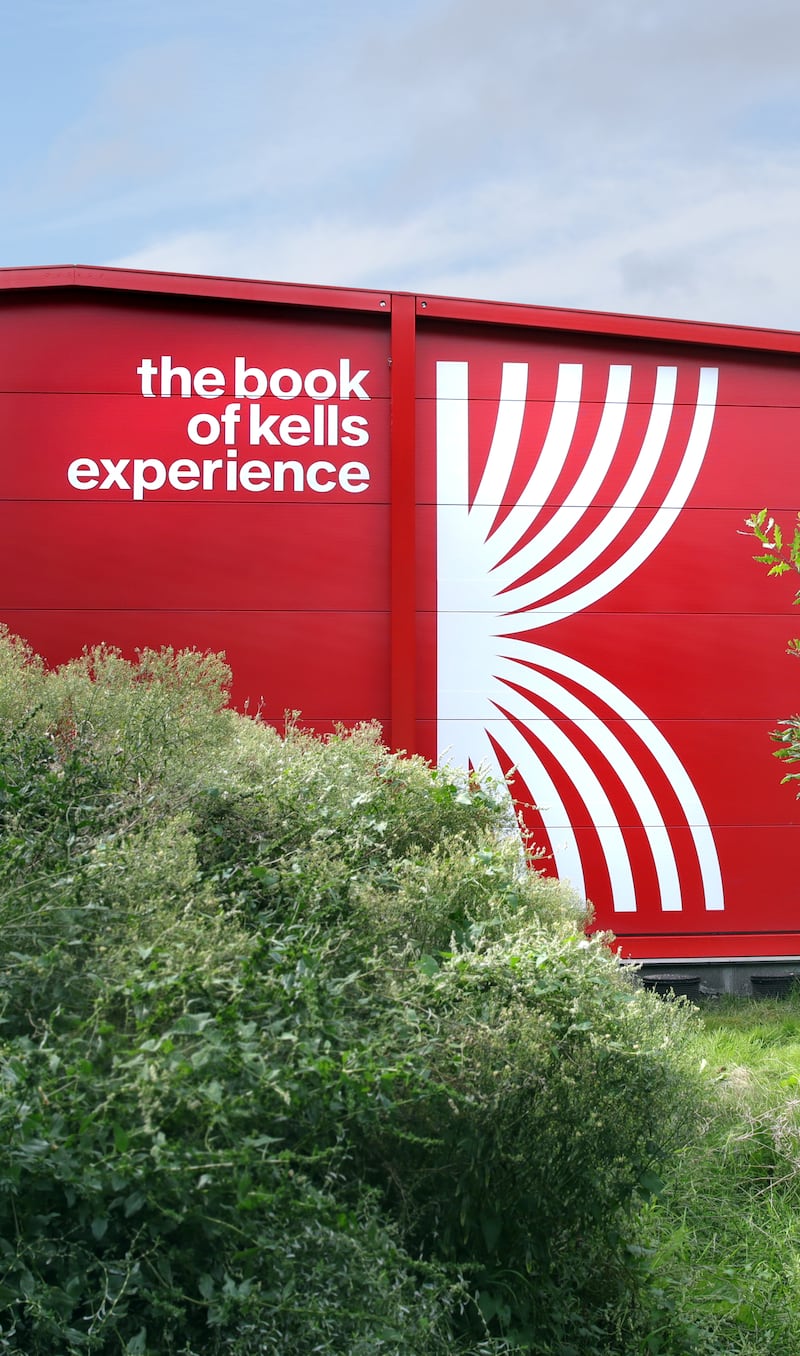
Designed by Event (which also created Epic, the Irish emigration museum, in Dublin’s docklands) in collaboration with Trinity, the pavilion’s interior is divided into three zones. The first showcases dozens of treasures from the Old Library. A stack of 26 boxes run the length of a large wall, which is itself a screen. Each box has a QR code linking to Trinity Virtual Library. “Our collections are now boxed up, they’re all being conserved and preserved, but here we are allowing them to open,” Mac Fadden explains as animated contents from the boxes spring to life and fly across the screen, pages soaring like birds’ wings.

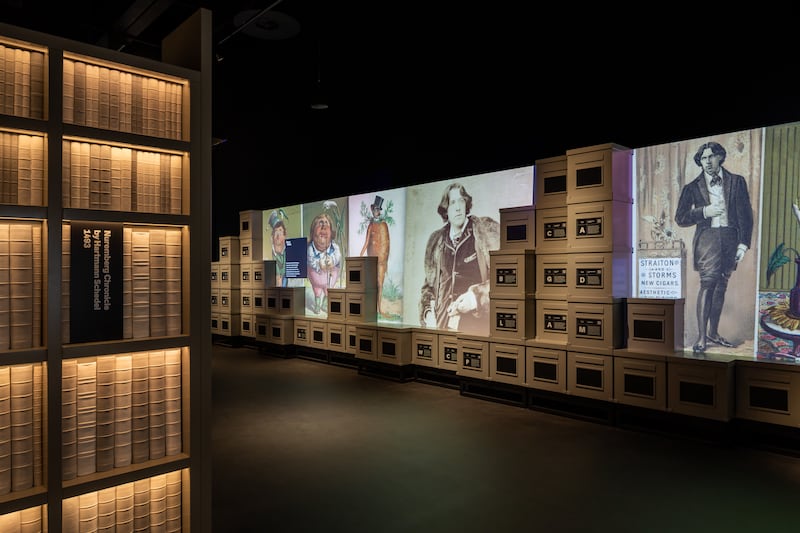
Vibrant landscapes and folk scenes from Lily and Elizabeth Yeats’s amazing Cuala Press publications shimmy alongside illustrations from early medieval manuscripts. Caricatures drawn by Oscar Wilde flit from one wall to the other, while a vampire appears from inside the distinctive yellow-and-red cover of the first edition of Bram Stoker’s Dracula. The display is both whimsical and practical, for the boxes are a tacit acknowledgment that collecting by its nature means that beautiful objects remain hidden.
Next up is a bank of shelves displaying interactive versions of Old Library treasures, including the medieval Brian Boru harp. On this version of the harp, the well-known historical harpist Siobhán Armstrong is playing an 18th-century lamentation. Also in this bay, eight famous figures from the collection of busts in the Old Library have been animated. Arranged in two rows of four, Ada Lovelace, Isaac Newton, Jonathan Swift, Rosalind Franklin, Augusta Gregory, Socrates, Shakespeare and Mary Wollstonecraft converse and share their stories.
The second zone is that of the Book of Kells itself. A transitory space includes an interactive version of the book. “You can touch this, look at it and get into detail. We’ve 10 of the folios here as well, some of the most celebrated pages,” Mac Fadden says. On the display, animated pages lift and turn, sending bright dots of colour, elaborate spirals and religious icons tumbling on to the floor. Illustrations of imagined creatures and familiar animals and motifs bound across the walls until the pages are blank, returned to their original chalky vellum grey.
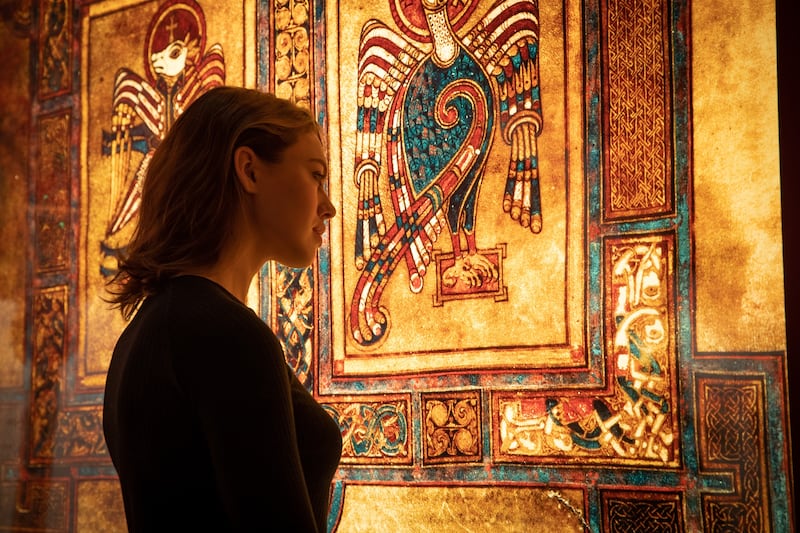

This entryway leads to the area where an eight-minute looped animation tells the story of the Book of Kells manuscript, which features the four gospels from the Christian New Testament in Latin. Scholars believe the book dates to around the year 800 and was the work of a handful of monks on Iona, in the Scottish Hebridean islands, where St Columba had founded a monastery. To avoid Viking raids, it was taken across the sea to Ireland, about 120km to the south. Two centuries later it was stolen from its home in Meath. When the book was recovered, its casing, believed to have been decorated with gold and jewels, had disappeared. (Illustrations in the book of an ornamental red case are believed to represent this long-lost gem.)
In 1661 the bishop of Meath gifted the book to Trinity. The animation is gorgeous, I say to Mac Fadden’s colleague Darajane O’Sullivan. “This is my fourth time seeing it today,” she says cheerfully. Did it feel strange, I ask, to deconstruct the Book of Kells to this extent; to take apart something we are used to experiencing as a single, perfect object? “I think it was more exciting to open up the collections,” she replies.
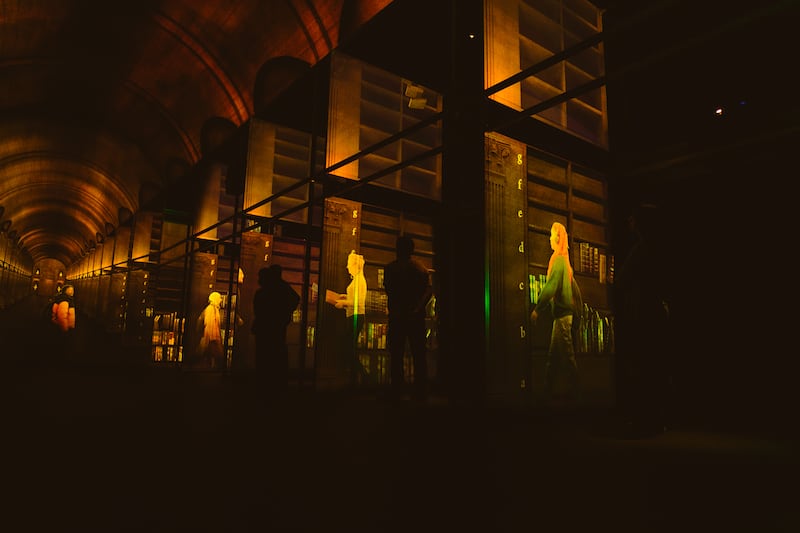
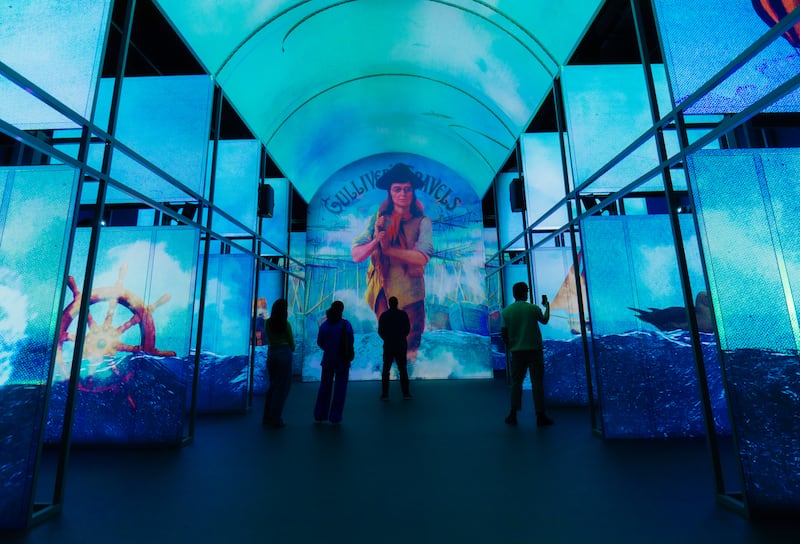
The final section of the exhibition is given over to a virtual version of the Long Room itself. Featuring students from Trinity’s drama course in costume, this sequence tells the story of the Long Room from inception to contemporary times in such a way as to make it feel as if the vaulted space is being constructed around you. “I think students will love it,” Mac Fadden says. “All our students get in for free and can bring two guests.” She believes the new pavilion will make the Book of Kells more accessible to more people. “We have the physical Old Library, which our visitors love. They’re coming for the Book of Kells, for the Long Room; they absolutely adore that. And then we also have this new digital experience. Hand in hand, they’re really going to complement each other. So it is contemporary but also historic. It’s not one outweighing the other.”
The Book of Kells, the physical book, is an awe-inspiring act of faith. This new exhibition doesn’t detract from that. Watching its fantastical creatures and intricate shapes come to life on the walls around me suggests the monks who made it had another secret to share: an act of faith is also an act of the imagination.
The Book of Kells Experience opens on Wednesday, January 3rd. You can buy tickets at visittrinity.ie




















